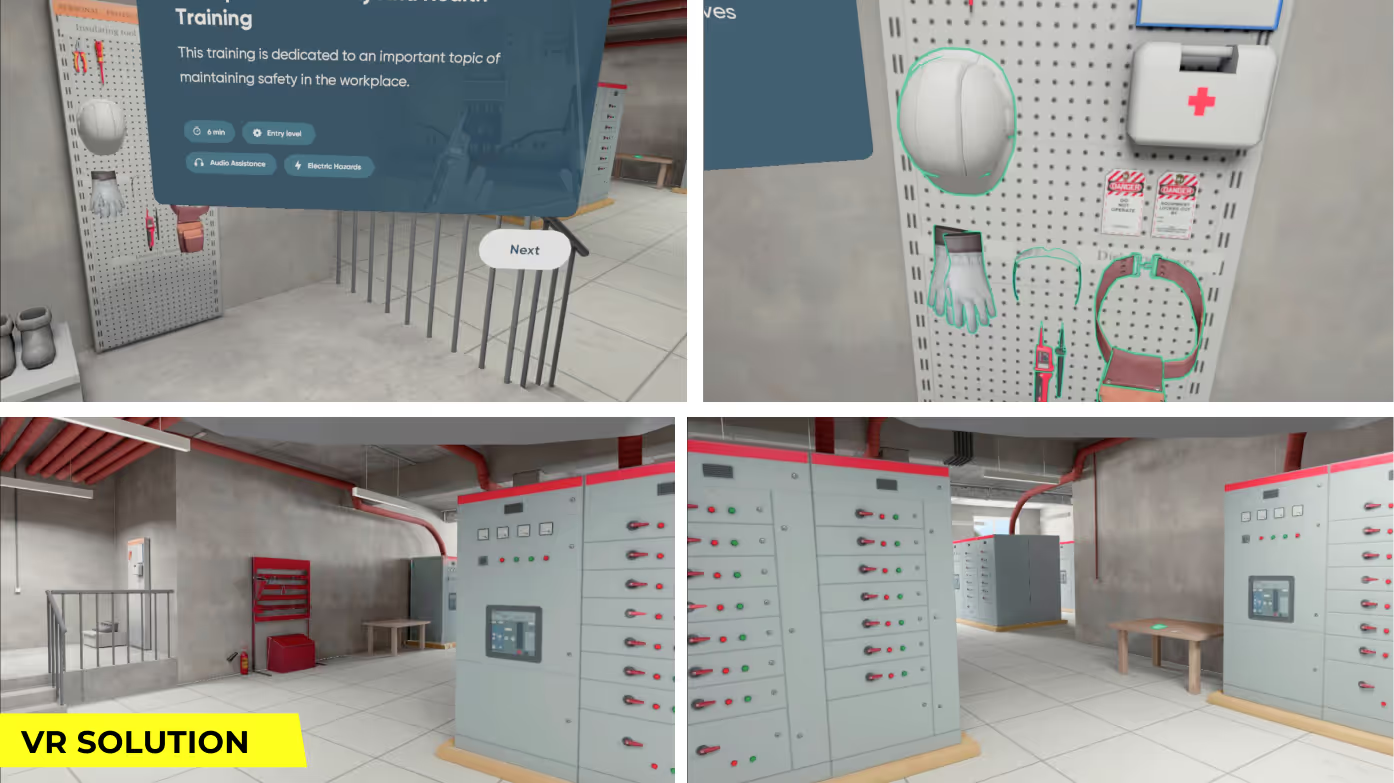Occupational Health and Safety Training in Virtual Reality
VR Safety Training is dedicated to such important topics as maintaining safety at the workplace, helping employees to eliminate hazardous conditions and avoiding them by following the OSHA 1910.269 standards requirements.

Virtual Reality (VR) is revolutionizing Occupational Health and Safety (OHS) training by providing immersive, interactive environments where employees can practice safety protocols without real-world risks. This approach enhances learning effectiveness, engagement, and retention, leading to safer workplaces.
Benefits of VR in OHS Training:
- Immersive Learning: VR creates realistic simulations, allowing employees to experience and respond to potential hazards in a controlled setting.
- Enhanced Engagement: Interactive VR modules increase employee involvement, leading to better retention of safety procedures.
- Safe Practice: Employees can practice handling dangerous situations without exposure to actual risks.
- Cost-Effective: VR training reduces the need for physical setups and can be scaled across multiple locations.
Training Scenarios Covered:
- Emergency Evacuation Drills: Learn how to respond during fires, natural disasters, or other emergencies.
- Hazard Identification and Risk Assessment: Understand workplace hazards and best practices to mitigate them.
- Machinery and Equipment Safety: Gain hands-on experience in operating heavy machinery safely.
- Personal Protective Equipment (PPE) Training: Learn the correct usage of PPE in a fully immersive environment.
- Chemical Handling and Spill Response: Master safe handling techniques and emergency response protocols for hazardous substances.
Weekly newsletter
No spam. Just the latest releases and news around Metaverse, Virtual Reality, Mixed Reality and Immersive Tech Space.
Thank you! Your submission has been received!
Oops! Something went wrong while submitting the form.
